The More Life, Less Stuff campaign advocates for spending less, buying local, finding local community, centering experience over shopping, and much more. Along with buying less, repair is a big component of the More Life, Less Stuff lifestyle. Repair encompasses a wide range of activities. Previously, I shared a story about mending clothes and discovering new life in our old clothes. In this story, I want to talk about repairing electronics and other household items.
In Shinto folklore, there is a belief that objects that have been loved for a long time become a type of spirit or yokai called “tsukumogami.” Though this belief originates in Shinto, it is not viewed as a highly religious concept — rather, it’s frequently used as a way to teach children the importance of caring for objects. This idea has become a principal part of Japanese culture, even making appearances in anime like Tsukumogami For Rent (2017). Like many families in Japan, I was taught tsukumogami as a type of honor or reward one is blessed with only after caring for an object long-term, which is probably why I still prefer using treasured items over purchasing new things.
There are specific objects that I will prioritize repairing so I can continue to use them for one reason or another. Even if they get to the point where they are no longer repairable, I will still keep them as precious treasures in my memory box. My 2005 iPod (4th gen with the click wheel) is a good example of the type of precious object I care for. I requested this iPod as a gift from my father right before I left for college decades ago, when I realized I would not be able to bring all of my CDs and MDs (yup, I had those too) with me to my dorm. Since then, this iPod has traveled around with me and I still continue to use it regularly.
[Erica’s drawing of a tsukumogami]
Like many other objects I own, I always thought I would stop using my iPod when it became unrepairable, but it has outlasted many of my other devices. One of the reasons this iPod has outlasted others is because of the way it was built. The casing is not difficult to take apart to replace the battery, and batteries with the necessary voltage that will fit the casing continue to exist. During my most recent excursion to Apples and Oranges, a local repair shop, to get the battery replaced for both my iPod (4th gen) and iPod Nano (2nd gen), the repair costs for the iPod were dramatically cheaper than the Nano. The iPod Nano is technically “newer” than the iPod, but the older iPod had less obstacles to take apart than the iPod Nano to make repair possible.
This issue of device accessibility is an important aspect of the right to repair movement happening all over the world. When things are not repairable, they end up in the trash. A conscientious consumer will most likely take the broken device to be recycled for parts, but in many cases, it simply ends up in a landfill. The need for rare minerals for advanced technology like our smartphones have led to large scale human harm. Repair is not just about extending the life of an object out of financial necessity or sentimentality, it is about understanding the global impact of the technology industry on the environment and human health.
Free Local Repair Clinics
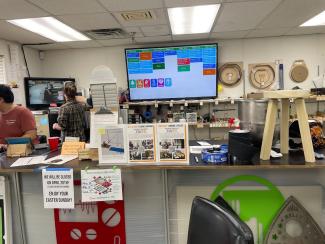
Getting started with repairing an object can be daunting, especially when you do not have the necessary tools or expertise. There are local resources that can help. In addition to repair shops like Apples and Oranges, there are free repair clinics in Ann Arbor such as Fix It Fridays at Maker Works (once a month on Fridays from 4:30 p.m. to 6 p.m.) and Thursday Repairsdays at All Hands Active (Every Thursday 6 p.m. to 8 p.m.). These repair clinics are run through a network of volunteer experts that offer their knowledge, skills, and time to those in need. Though they cannot guarantee that your item will be fixed, they do their best to assess what kind of repair the object might need. On April 19th, I attended a Fix It Friday Event at Maker Works.
Maker Works is a community space that offers tools, space to work, and classes on a wide range of subjects. Founded in 2011, it started with a very simple idea: have a space where anyone can come in to make anything they want. Josh, the executive director of Maker Works, noted that the goal is not just to provide access to tools and technology or to fix broken objects, but to help eliminate the various hurdles to getting started with your maker journey, especially for underrepresented communities. Repair is just one of many functions of this space.

At the Fix It Friday event, he emphasized that there is joy in helping people care for their treasured items, like the only remaining chair from the very first Chinese restaurant to ever open on Main Street in Downtown Ann Arbor. Each object that is brought in has its own history and stories.
“If you get stuck, we’re always here to help” - Josh, Executive Director of Maker Works
He said that Maker Works exists to offer classes, tools, space, and support to everyone. They hope to inspire and encourage people, teaching that we are all capable of learning how to make and repair things. For example, seeing someone repair a broken object can empower someone to tackle the repair themselves in the future. According to Josh, roughly 20% of repair requests that come in are lamps, so they have started classes specifically on lamp repair basics. The class is not just about the how-tos; it provides hands-on experience to help people to gain the confidence to try other repairs on their own.
I took my old VCR, which had started to eat the tapes whenever I tried to rewind, in the hopes that they might be able to fix it. I was helped by a lovely gentleman who used to work at a television station in the 1960s and had experience dating back to the very first videotape players networks used. I made the mistake of not bringing a VHS tape to reproduce the issue to get proper diagnosis for the problem, so there was not much that could be done during this visit. But I enjoyed opening up the VCR, learning about how it works, and talking to the volunteer about his experience with the old school videotape players. The event was not just about getting items fixed; it was about connecting with new neighbors I would not have otherwise encountered.
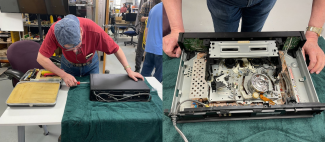
Community-Based Repair Economy
“[Repairs are] challenging and entertaining” - Greg Miller, local business owner, engineer, and repair person.
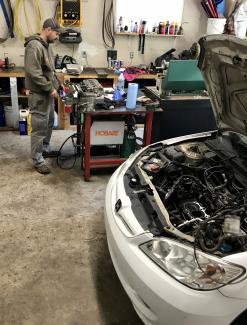
Alongside repair shops and clinics, there are other local communities that develop an ad-hoc repair economy. These types of community repairs also fulfill a crucial need. Unlike repair shops and clinics, which often require you to bring in the item, community repair requests accommodate larger items that cannot be moved or that the owner is unable to carry, especially benefitting older and/or disabled residents.
Greg Miller, local real estate business owner and engineer, is one of many that participate in such community-based repair activities. He is part of his neighborhood tool cooperative and offers repair services through introductions and community apps like Next Door. He provides welding, small engine repairs, and other services for a small fee to cover parts and his labor. However, this is not his main source of income. He takes on these requests because he finds them to be “challenging and entertaining” activities that allow him to prevent objects from ending up in the landfill while helping people.
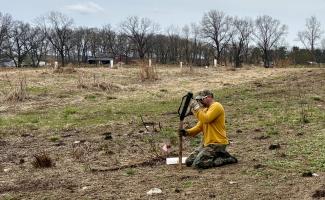
He is a trained engineer, but his interest in repairs started at a young age out of necessity due to financial constraints. This included repairing his own car and things from the side of the road. He mentioned that his chainsaws were roadside finds, which he repaired. He emphasized that he “enjoys learning new skills and values having skills.” He is not afraid to dive into something new. For example, he bought his first welder with no prior experience because he wanted to learn to use it. Like any beginner, he was not very good at first. He attributed his willingness to self-learn and experiment to the fact that as an engineer he is “used to things not working the first time around,” which makes failure the default until it starts to work.
Greg mentioned that he finds this work necessary because the low cost of international labor has resulted in fewer local repair shops and production of repairable products, which means more things end up as trash. He emphasized the role of community support, such as lending and borrowing tools, instead of buying a device you use just a few times. He gave an example of how he needed a leaf blower to use on his farm, which he borrowed from a neighbor off of Next Door instead of buying one. He said it wasn’t about the money of purchasing or renting, but about not buying unnecessary things that collect dust in your home or end up in a landfill after just a few uses. He stressed the importance of asking your local community before buying, because there may be someone who is willing to lend you a tool or a hand.
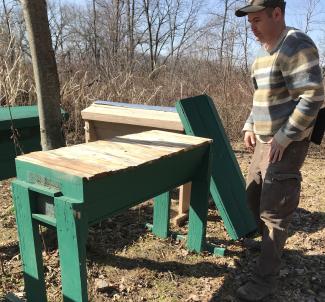
One of the most eye-opening tips Greg gave me during our conversation was that repair does not always have to be about returning an item to its ‘like-new’ or original state. For example, one of the concerns about repairing my iPod Nano was whether there was a battery on the market that would fit its specific casing. However, Greg pointed out that if the goal was simply to get it to work, I could drill a hole in the casing and attach a battery externally, which would actually allow for a bigger battery. Repair can be flexible, depending on what you need and want.
Don’t Be Afraid To Repair!
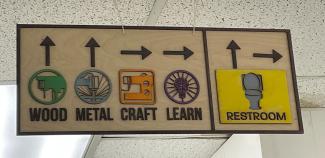
Many of us may feel inadequate or simply too limited for time to do any repairs. Repairing frequently requires specific tools and skills one might not immediately have, but through this process I learned that it is not as scary as it seems and that there is a lot of freedom in this activity. The worst case scenario is that the object is unrepairable, but you would not know if it is or isn’t repairable until you try to repair it either yourself or through supportive local “fix it” communities. Take the time to look into your neighborhood for the rich knowledge and expertise that is just a few steps away from you to preserve your precious treasures.


